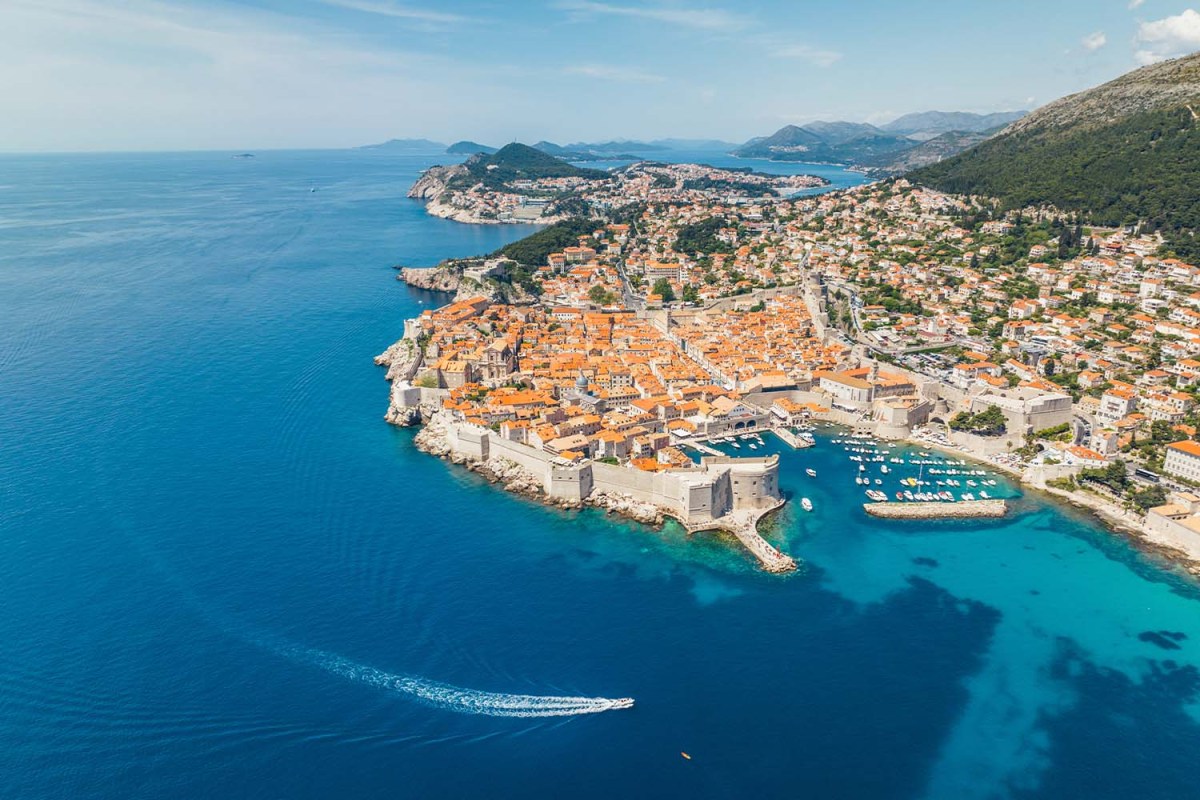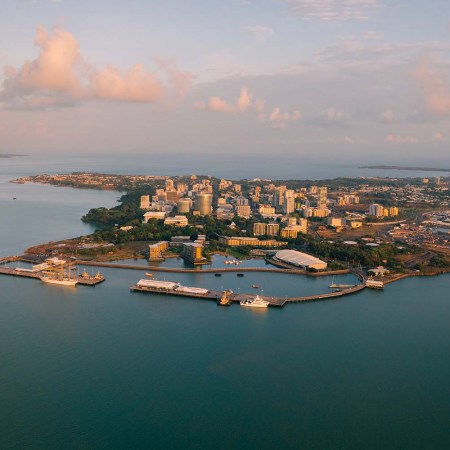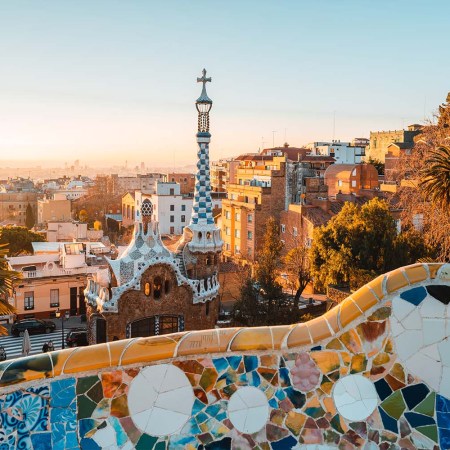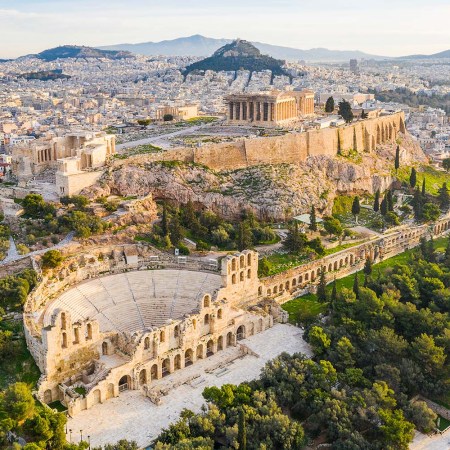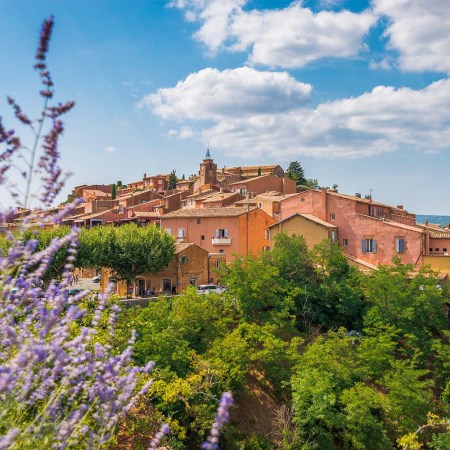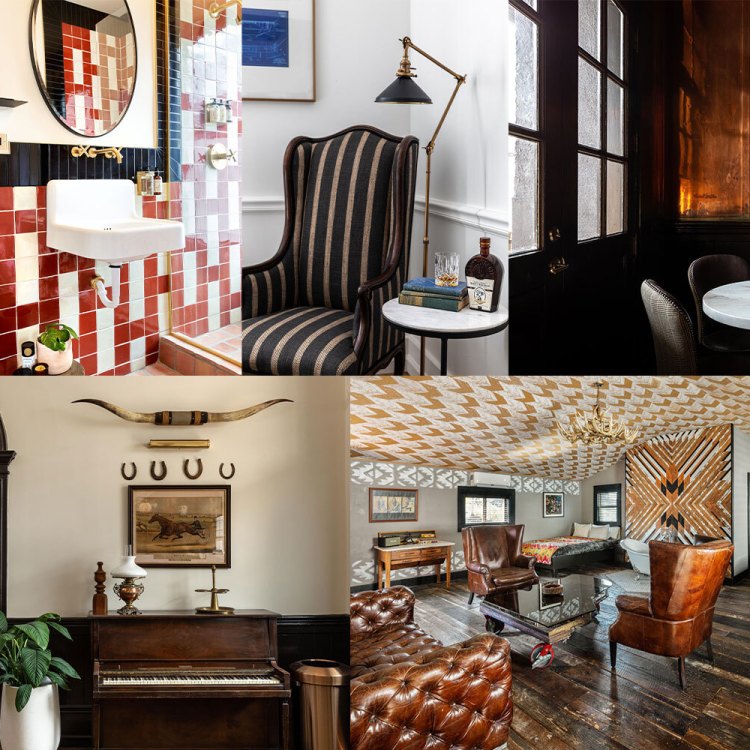Not even feisty Adriatic Bora winds rocking my plane upon descent into Dubrovnik can spoil the view of Croatia’s craggy shores. Villages and towns appear as tiny commas at 1,000 feet, fronted by marinas embracing the sea on the west and backstopped by the Dinaric Alps to the east. This is the Mediterranean at its sexy, intoxicating best.
So began my week-long fill of scenic eye candy where the cerulean Adriatic is central to most every activity I encountered. From island hopping by chartered boat and bobbing about back bays where just-harvested mollusks are prepared by my ship’s captain-turned-chef, to lazy lunches harborside and exploring Dubrovnik’s historic Old Town, the sea is always the star player of any visit to this port city, known in Roman times as Ragusa. A week here is just the ticket for recharging in style.
Day 1:

Stay: Hotel Excelsior
Hotel Excelsior is a standout in a handful of independent five-star Dubrovnik properties owned and operated by Adriatic Luxury Hotels (ALH). At once elegant and casual, the Excelsior’s sleek lobby sports floor-to-ceiling windows flooding guests with sunshine. Vistas yield the bouncing Adriatic just 50 feet below, close by Lokrum Island and Dubrovnik’s Old Town, which is a 5-minute walk. Ditto for the rooms which boast balconies, electric blackout shades, extra-large baths and space to work (not that I wanted to). The amenity-rich property spoils guests with a full service spa, pool and a well-tended expansive private beach deck. They excel at small personal touches. My custom order cappuccino simply appeared on my breakfast table day on two of my stay without asking, making me feel special but not fussed over.
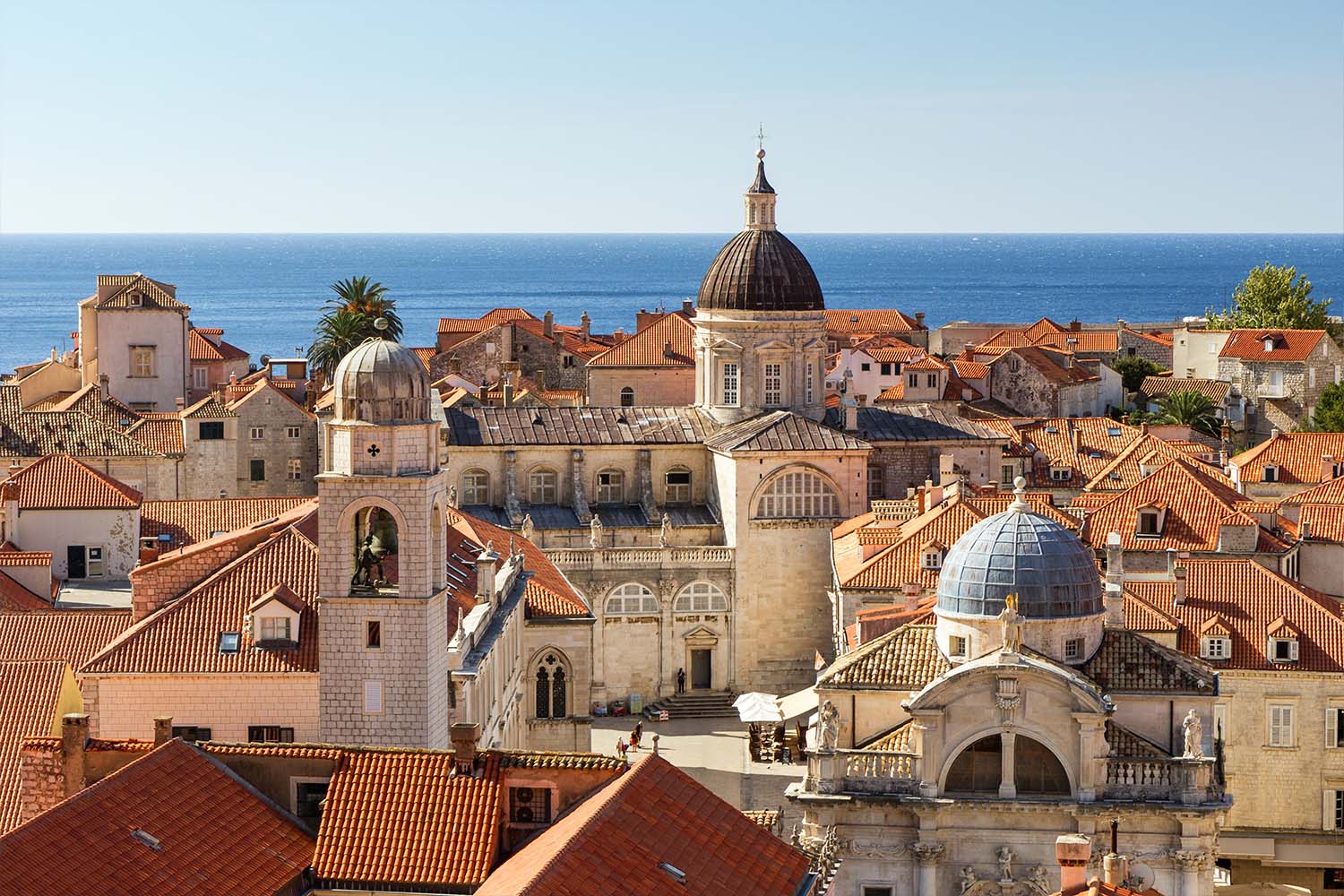

Explore: Old Town Dubrovnik
UNESCO World Heritage site Old Town Dubrovnik tops the must-see list for all visitors here. The Old City dates to the 13th century where its unique maritime trading position in the Mediterranean served as both a strategic advantage and a point of vulnerability.
Dubrovnik grew in the 15th and 16th centuries to become one of the wealthiest city/states in Europe. A major earthquake in the late 1600s significantly damaged the city, and much of what is seen today is reconstructed from that period. Classic Baroque, Gothic and Renaissance architectural styles blend where churches, monasteries, palaces and fountains lay out in expansive public squares and plazas, interconnected by a grand main boulevard with offshooting narrow cobbled streets and alleyways. Old Town’s fabled stone walls, some 83 feet high, loom over most of the site and lend to the magical feel.
There’s much to explore, and a comprehensive visit can cover the better part of a day. Come prepared for the crowds. Dubrovnik is a major Mediterranean cruise ship destination, and daily disgorgements bring upwards of 8,000 people a day inside the already tourist-swelled 240-acre walled city.
Pro tip: Start early — very early.
Jet lagged as I was, getting up and down to the Old Town by 7:00 a.m. was amply rewarding. Many cruise ship tourists show up much closer to 9:00 a.m. when the main ticketed attractions (City Walls, Cultural History Museum, Rector’s Palace, Friars Minor Franciscan Monastery Museum and many archaeological exhibitions) open for admission. Arriving early allowed me to roam the near-deserted, pedestrian-only Old Town streets unencumbered and soak in the archaeological splendor. The added benefit of nearly perfect “golden hour” light yielded nice snaps of the fabled Jesuit Staircase descending from Gundulic Square to St. Ignatius Church. The landmark was made famous by Cersei Lannister’s shameful naked walk in the wildly popular Game of Thrones HBO series.
I wasn’t alone on the streets as dawn broke. I spied a wedding party, fully decked out and staging an early morning photo shoot on the steps of the Baroque-style St Blaise’s Church, the bride being fussed over by her handlers. It was a calm start to a crowd-filled day and entertaining to take in the typically unwitnessed scene of local workers scurrying about and readying for the day ahead.
After a coffee harborside, check out the Old Synagogue inside the walled city. The tiny Jewish temple, built in the mid-1500s, is the oldest Sephardic synagogue in the world and second oldest synagogue in use today in Europe. I also caught an early cable car — just adjacent to the walled city — for the four minute ride to the top of Mount Srd. It’s all about the view, and I spent a fun half hour in photographic aid to selfie-seeking visitors positioning their mugs with panoramic views of the city’s terracotta rooftops and yachts bobbing about the azure sea below.
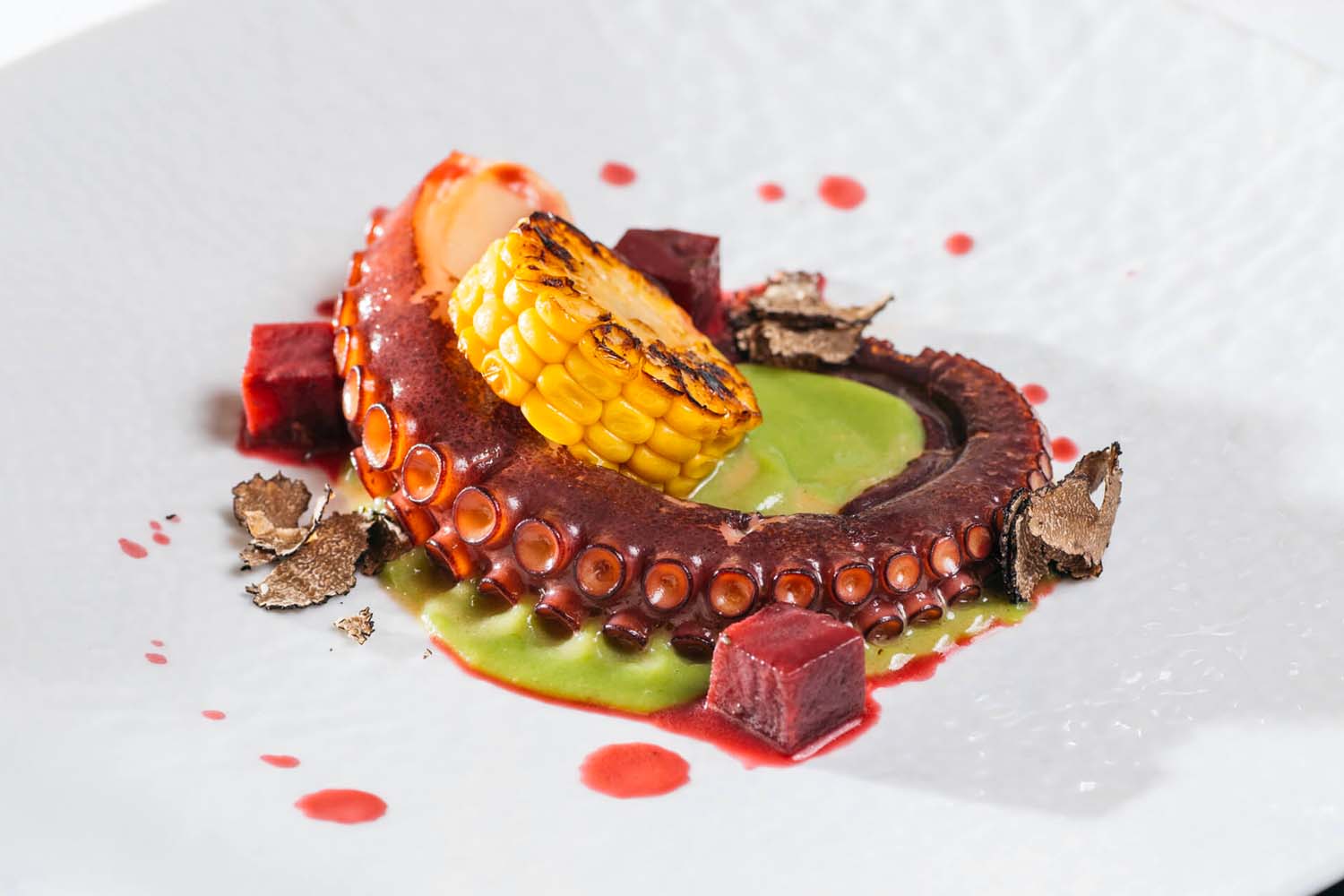

Eat: Restaurant Dubrovnik
Situated in a second-story loft just off the Old Town’s main Stradun boulevard, Restaurant Dubrovnik is a stylish oasis of calm, and just what’s needed after a busy day on my feet. This Michelin Guide listed Mediterranean bistro is splurge-worthy, though a five course tasting menu is a reasonable €95. The chefs combine the freshest seafood with local garden bounty to conjure dishes like smoked eel and mussels with citrus, honey, olive oil emulsion and caviar, and charred octopus with sweet corn, beetroot and broccoli cream with black truffle. The pacing and service are well balanced and the staff attentive.
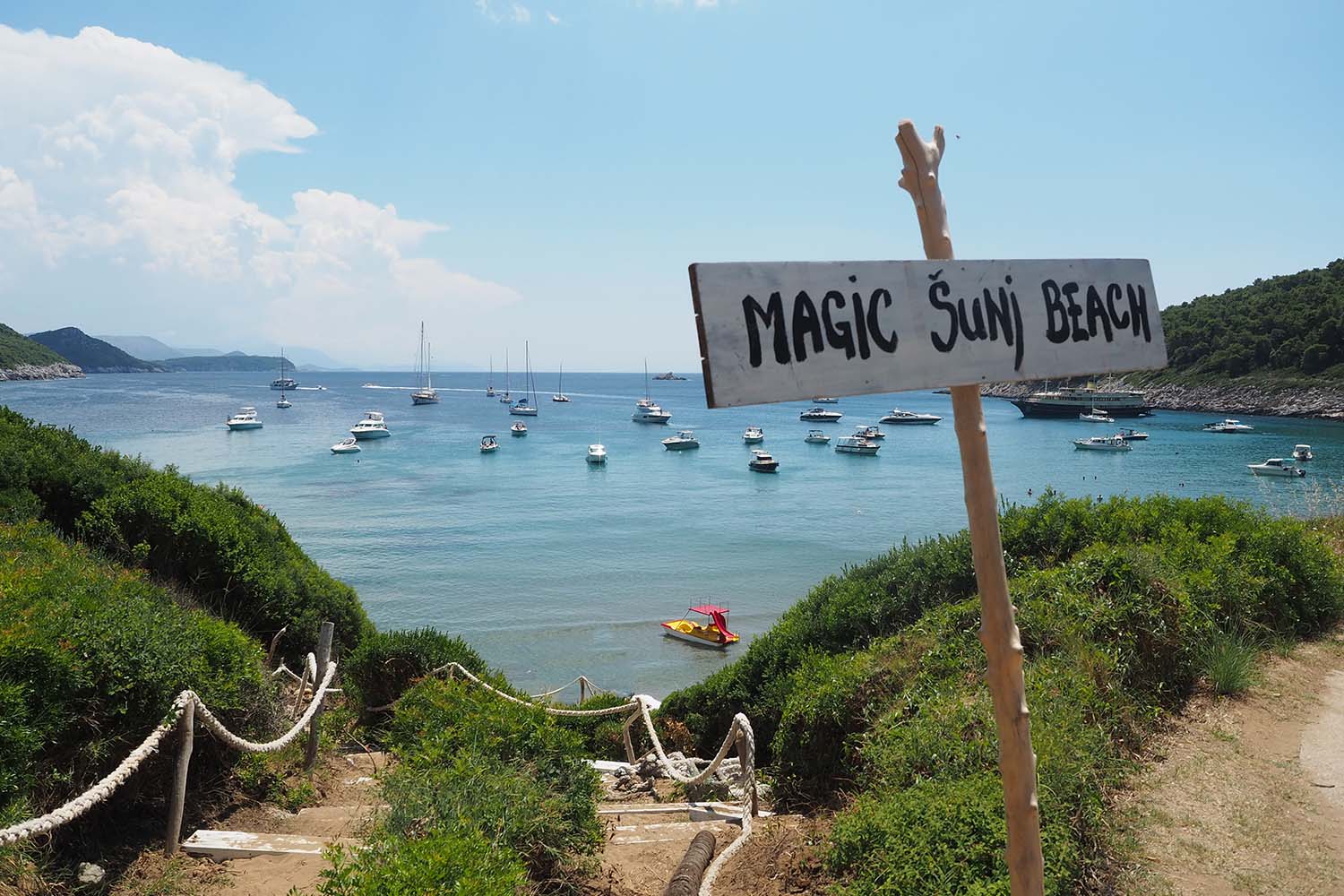
Day 2:

Cruise: Island hop through the Elaphiti chain — Blue Cave, Sunj Beach and Lopud
Hotel Excelsior’s concierge comes through with a day boat charter for our group, summoning a 45-foot Ferretti complete with captain and first mate to cruise the Elaphiti Islands — tiny land masses that stretch mostly to the north and west of Dubrovnik. A short hop to the pier from the hotel, and we’re helped aboard the “Kate” for the kind of sun-soaked day on the Adriatic that has me dreaming Gwyneth Paltrow, Jude Law and Matt Damon will pull alongside us any minute in a Riva.
First stop is the Blue Cave. We drop anchor and are in the drink with flippers, masks and snorkels, headed to a half-moon shaped opening at the limestone base of a cliff in a small bay at Bisevo island. After crossing through the water transom, I’m in the cave with my pals bathed in an eerie aquamarine glow, created from diffused sunlight knifing in through cracks in the limestone.
Next, Kate speeds off to Sunj Beach, a sandy crescent fronting crystalline water. There’s kids playing makeshift water polo games, kayaks, paddle boards, loungers and umbrellas to rent, and two bars where a crisp Ozujsko lager with a plate of fries qualifies as late breakfast.
Pro tip: Your cash is non grata here and credit cards are only accepted at the upper bar overlooking the beach. Popular U.S. mobile cash apps like Venmo are equally unwelcome. Load Revolut, a popular app in Croatia and throughout Europe, to your phone before you cross the pond, and you’ll be golden.

Eat: La Villa, Lopud
A short 15-minute cruise from Sunj to the opposite side of Lopud is the commercial and retail center of the island where several casual eateries are found. We nab a table outside at La Villa, where harbor views and glasses of Croatian wine kill the better part of a lazy afternoon. On tap are Italian-influenced selections like freshly pulled burrata globes, tomatoes and basil, tomato risotto with langostino and seared tuna with sesame crust, followed by decadent killer desserts.
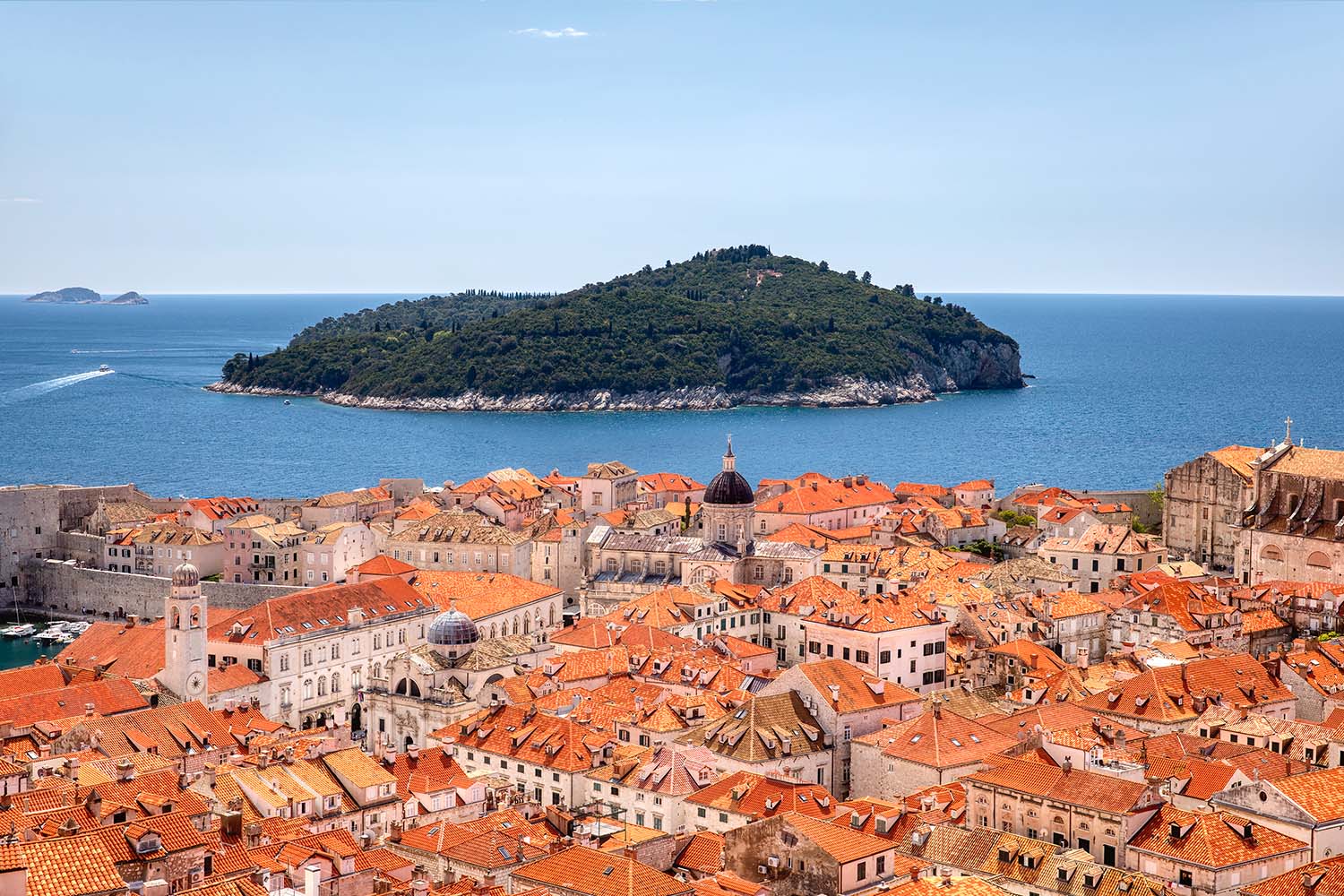
Day 3:

Explore: Lokrum Island
Just five kilometers and a 10-minute ferry ride from the port at the Old City, Lokrum is a great close-in nature escape that alludes most Dubrovnik visitors. Ferries run on the half hour and are only €27 roundtrip, including admission to the Nature Reserve and the Benedictine Monastery of St. Mary complex.
Pedestrians rule on Lokrum, as there is no automobile traffic here. There are well-marked hiking trails along the shore and throughout the Nature Preserve. Bring a suit and towel and take advantage of Lokrum’s Dead Sea. The interior swimming hole with an extra-high salt content is a nice spot for a dip after hiking along the Path of Paradise, through the Botanical Gardens or simply wandering amongst the ever present peacocks and their hatchlings.
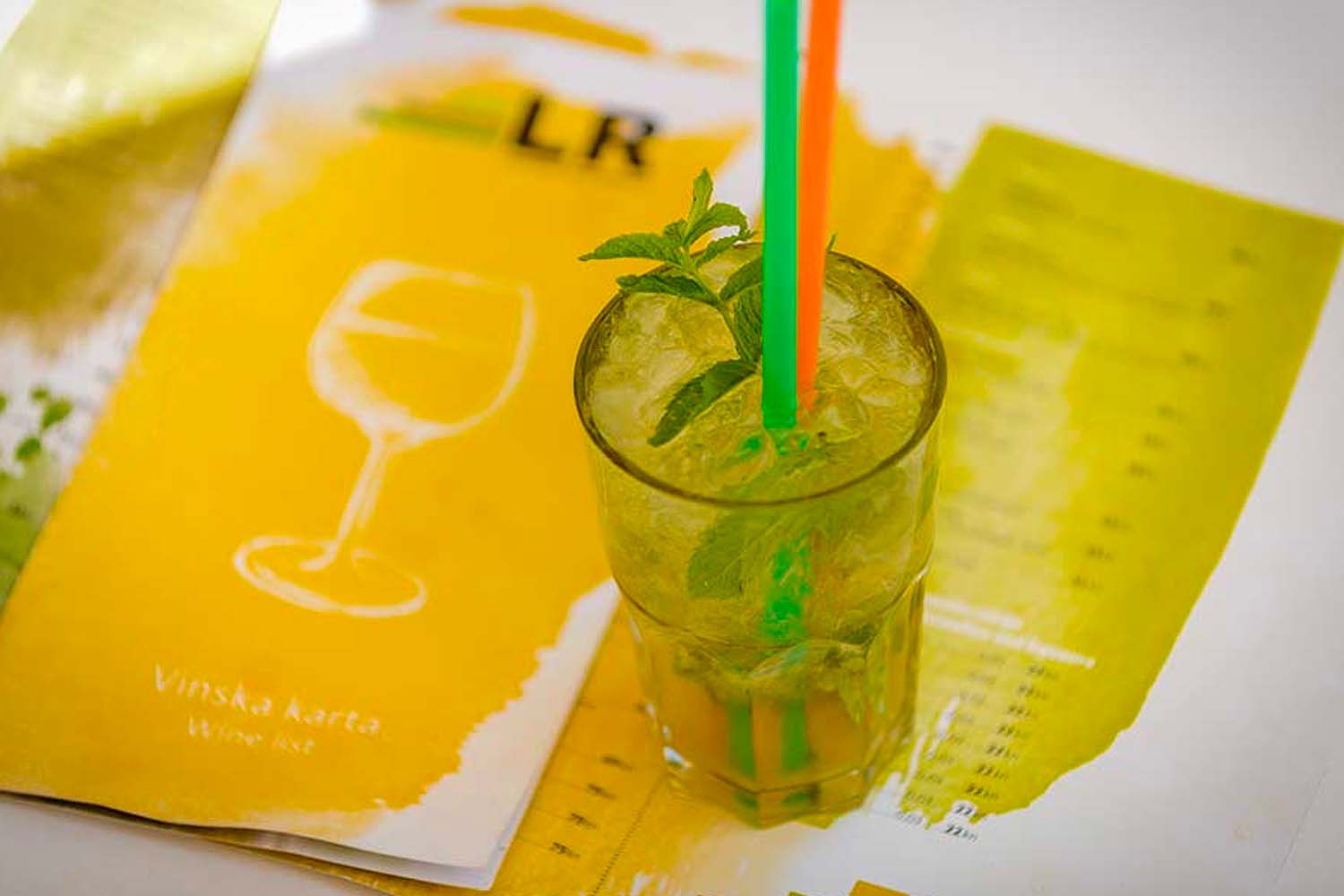

Drink: Mediterranean Gin & Tonic with fresh rosemary syrup — Lacroma Restaurant
The classic hot weather cooler is made even better with a syrup of freshly muddled lime and just-picked rosemary. The drinks are especially righteous at Lacroma, an outdoor island eatery with a full menu for mid-day fortifications.

Snack: Gelato at Gelateria Dubrovnik
Get a double scoop (Pistachio/Nutella) after waiting in line at the Old City shop. It’s the most touristy thing you’ll do all week, though you’ll have zero regrets.

Eat: Sensus at the Hotel Excelsior
Executive chef Peter Obad wields a light touch coaxing subtle flavors from the highest-quality, seasonal, local ingredients. Specials like pillowy lobster stuffed ravioli, squid-ink risotto and hake carpaccio show his mastery of Adriatic fare. Croatian wine pairings are a good choice here, as they’re accessible and easy drinking.
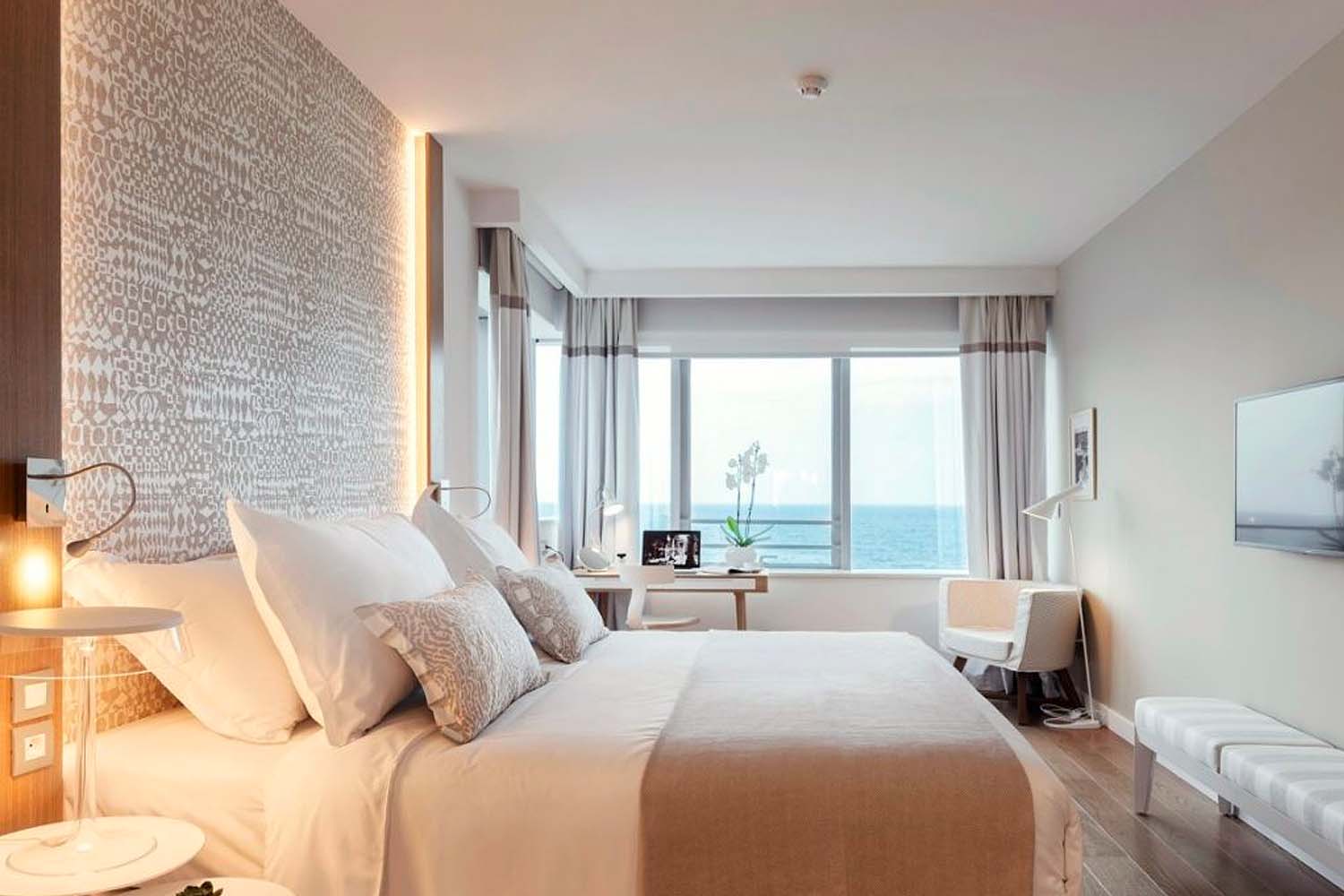
Day 4:

Stay: Hotel Bellevue
The 90-room Hotel Bellevue, carved high into the cliffs overlooking the Adriatic, is a five-star cousin of the Hotel Excelsior. There are three dining venues here, each with stunning sea views. Their flagship Vapor Restaurant earned its fifth consecutive Michelin Guide recommendation this year and offers an extensive wine list with Croatia’s best. Small touches like thick towels and old-fashioned turndown service add up to a very comfortable stay.
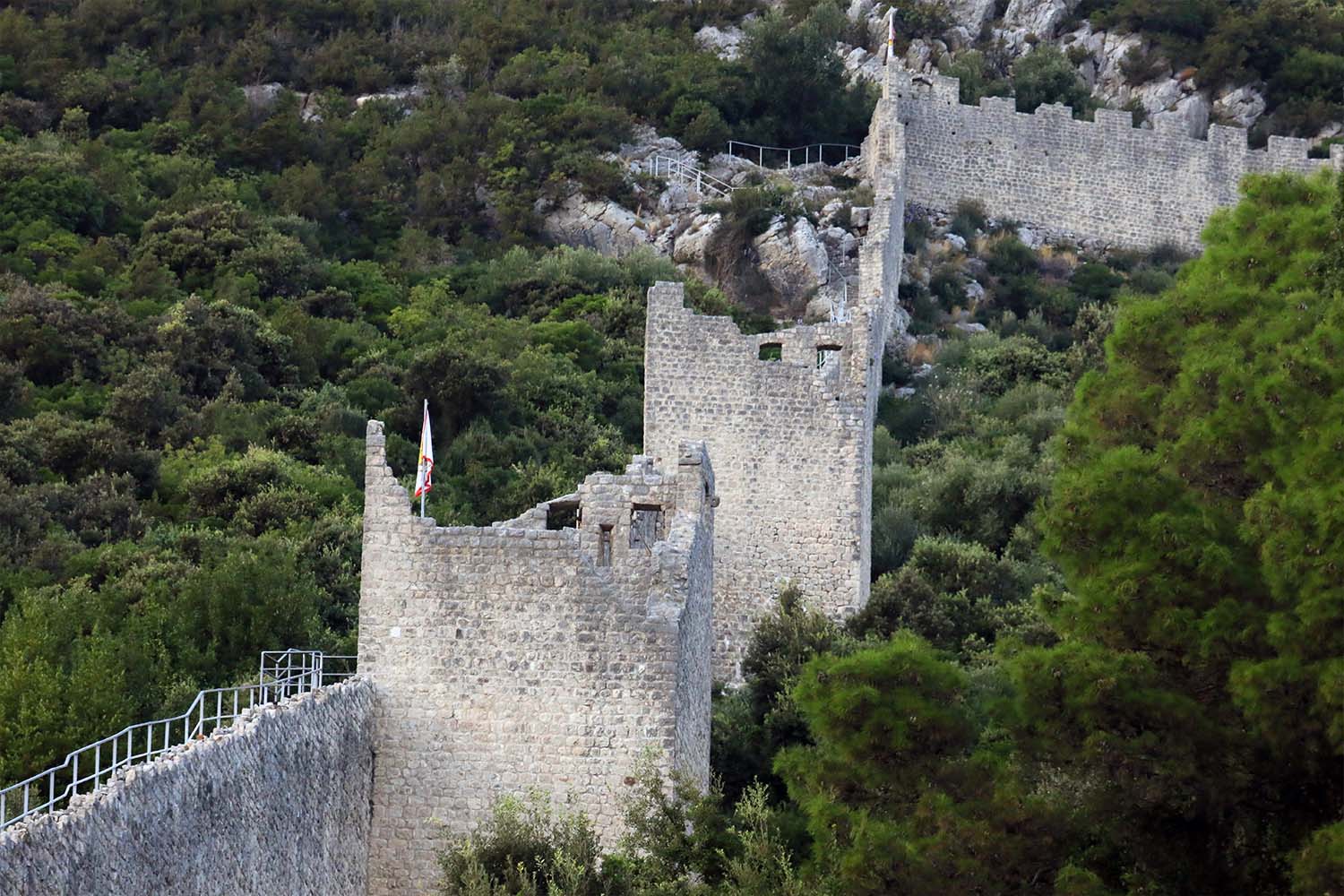

Hike: Ston Walls — Peljesac Peninsula
The medieval Croatia city of Ston is less than an hour drive along Dubrovnik’s Western Riveria. In the 14th century, Ston was a significant city of the Dubrovnik Republic, whose urban planners constructed massive walls with fortifications into the mountainside forming a defensive perimeter. The city was a commercial hub that focused on salt production and used giant evaporation pools (pans) to produce this precious commodity year round.
Today, the Ston walls offer intermediate to strenuous-level hiking options with the relatively easy hike from near the center of Ston to Mali Ston (Little Ston) less than a one hour hike one way. Locals note the wall, nearly five kilometers in length, is second longest on the globe, only behind China’s Great Wall.

Shop: Ston Fleur de Sel
A trip to the salt “factory” (a small shop fronting the great evaporation pools) near the center of town yields souvenirs for foodie friends back home. I scored the most delicate and luxurious salt crystals harvested off the very top of the salt pans — Fleur de Sel. This finishing salt comes with a decorative scallop shell for serving and is €15 for several ounces in a nice gift package.

Tour: Oyster & mussel farm boat tour
The inland brackish bays surrounding the Ston region are fertile waters for growing oysters and mussels. We arrange for a boat tour where our captain explains the laborious and high-touch process of growing and harvesting the meaty mollusks — a vocation undertaken by his family for generations.
He pulls up a cage swelled with barnacle-encrusted oysters, and after shucking two dozen in less than five minutes, we’re feasting on them paired with a cold Croatian rosé. Mussels come next, which are harvested nearby and cooked in white wine, garlic, butter and tomatoes right on the boat. It’s a grand treat and perfect appetizer before late lunch back in Ston.
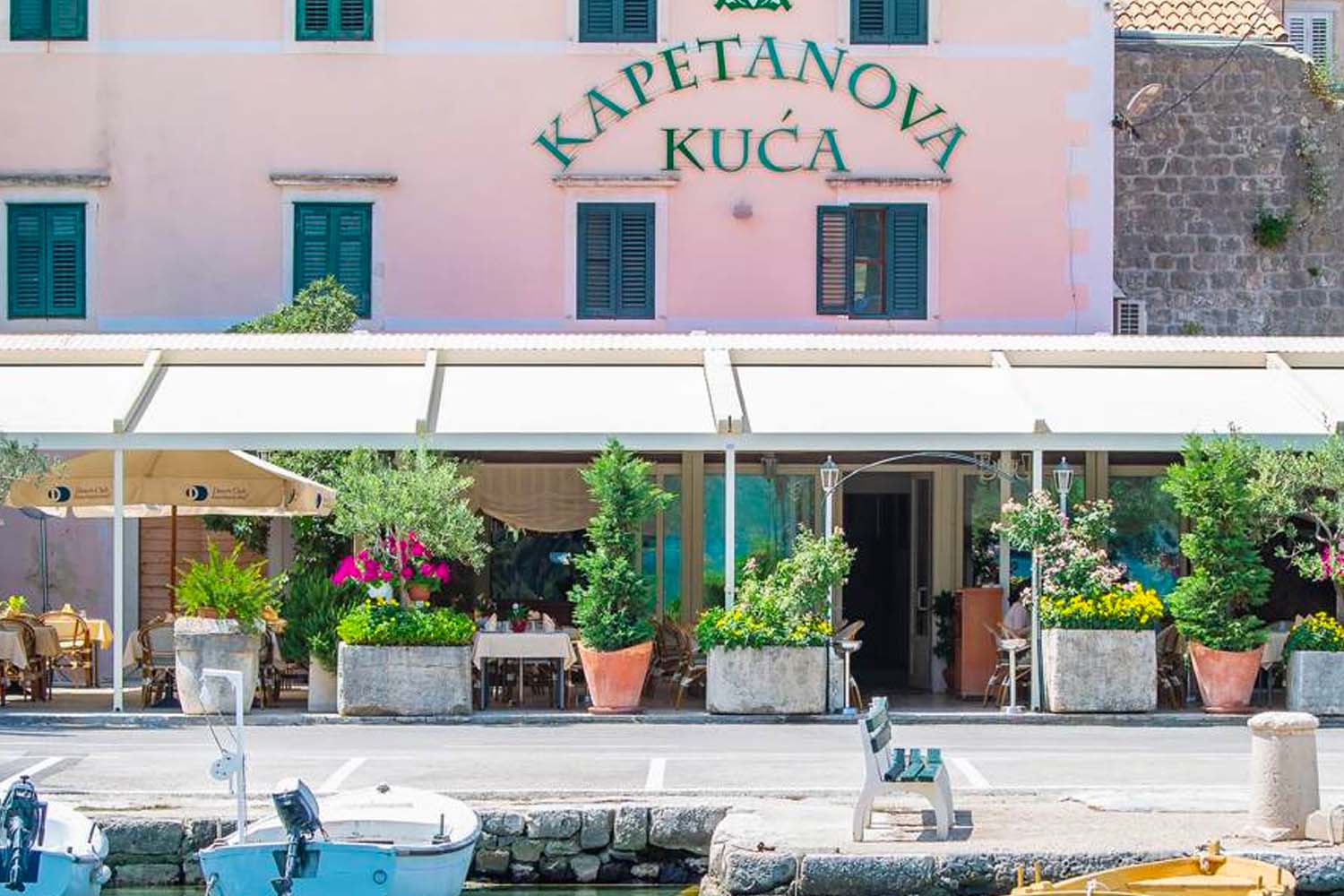

Eat: Kapetanva kuca
Forty-five years of family tradition star on the plate at this southern Croatian seafood institution. The waterfront stone house that the restaurant occupies was once where the captain of the Mali Ston guard lived during the time of the Dubrovnik Republic. The garden patio does not disappoint, where extraordinary people watching is bundled with handmade pasta and the day’s freshest catch.
Pro tip: Try the weird but wonderful “Golden Pasta Cake,” an unusual brown sugar and cinnamon spice cake with cooked, sweetened pasta baked into the batter.
Day 5:

Do: Beach, spa, relax
Built 30 meters high into a hillside overlooking a secluded cove, Hotel Bellevue offers a beach setup that commands attention. There’s a large deck with loungers, tables and shade with attendants who see to hydration needs. Beyond the deck is a wide swath of pebbly beachfront and a curvy stretch of guest-only access to this semi-hidden cove overlooking the Dalmatian Coast. I’m both amused and concerned by teenage cliff divers at a next door private residence who entertain with lofty jumps into the waters below. My two biggest decisions today are what time to have lunch and which of my unread novels I should put a dent into.
Alternatively, my colleagues hit Bellevue’s spa for massage therapy in the afternoon and, glowed upon return, they prompt me to check availability. I’m accommodated and splurge on some needed kneading.

Drink: Spritz Adriatico — Spice Lounge, Hotel Bellevue
Spice Lounge barkeep Mateo introduces me to his favorite warm weather drink, the Spritz Adriatico, which was created here by his boss. He blends Cocchi Americano, jasmine tea and peach puree in a tall, iced shaker, strains into an ice-filled rocks glass and tops with Mediterranean tonic (infused with lemon thyme). It’s a perfectly light, clean and delightful refresher to enjoy in the warm breeze.

Eat: Nevera
A day at the beach requires beachside dining, and Nevera at Bellevue delivers fresh catch of the day, salads and upscale bites like tempura shrimp and spicy falafel, all with an unspoiled sea view.
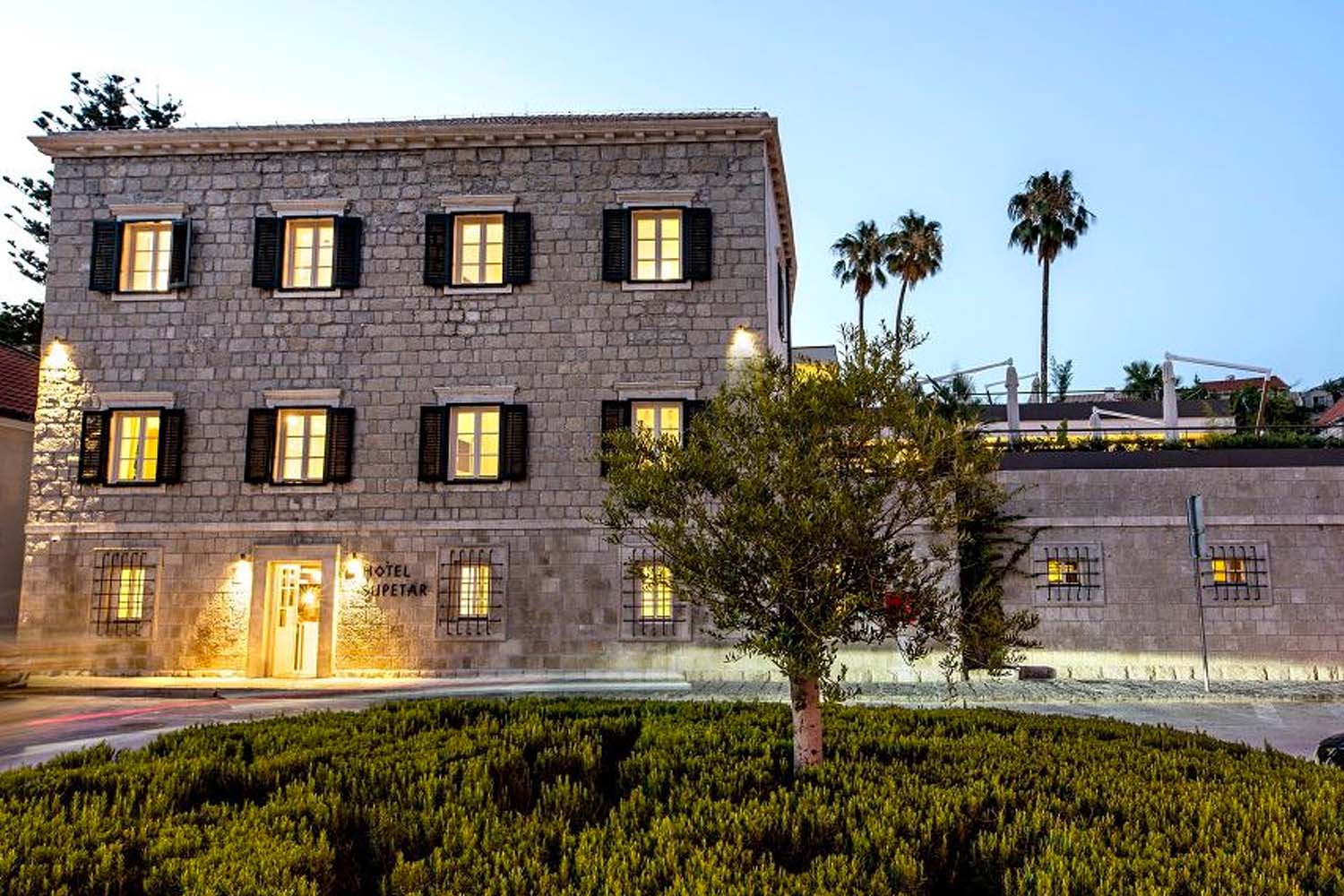
Day 6:

Stay: Hotel Supetar — Cavtat
Leave the hustle of Dubrovnik 30 minutes behind and head 21 kilometers south to the laid-back scenic village of Cavtat. The recently renovated Hotel Supetar hosts only 16 luxe rooms in an original three-story private villa. Public space here gleams with terraced dining areas, a chic bar and an evocative collection of contemporary abstract works from their inaugural artist in residence, Iva Laterza Obuljen. Iced towels upon arrival, doors that magically open upon approach and “yes” as the answer to every request let guests know they are in holiday heaven.
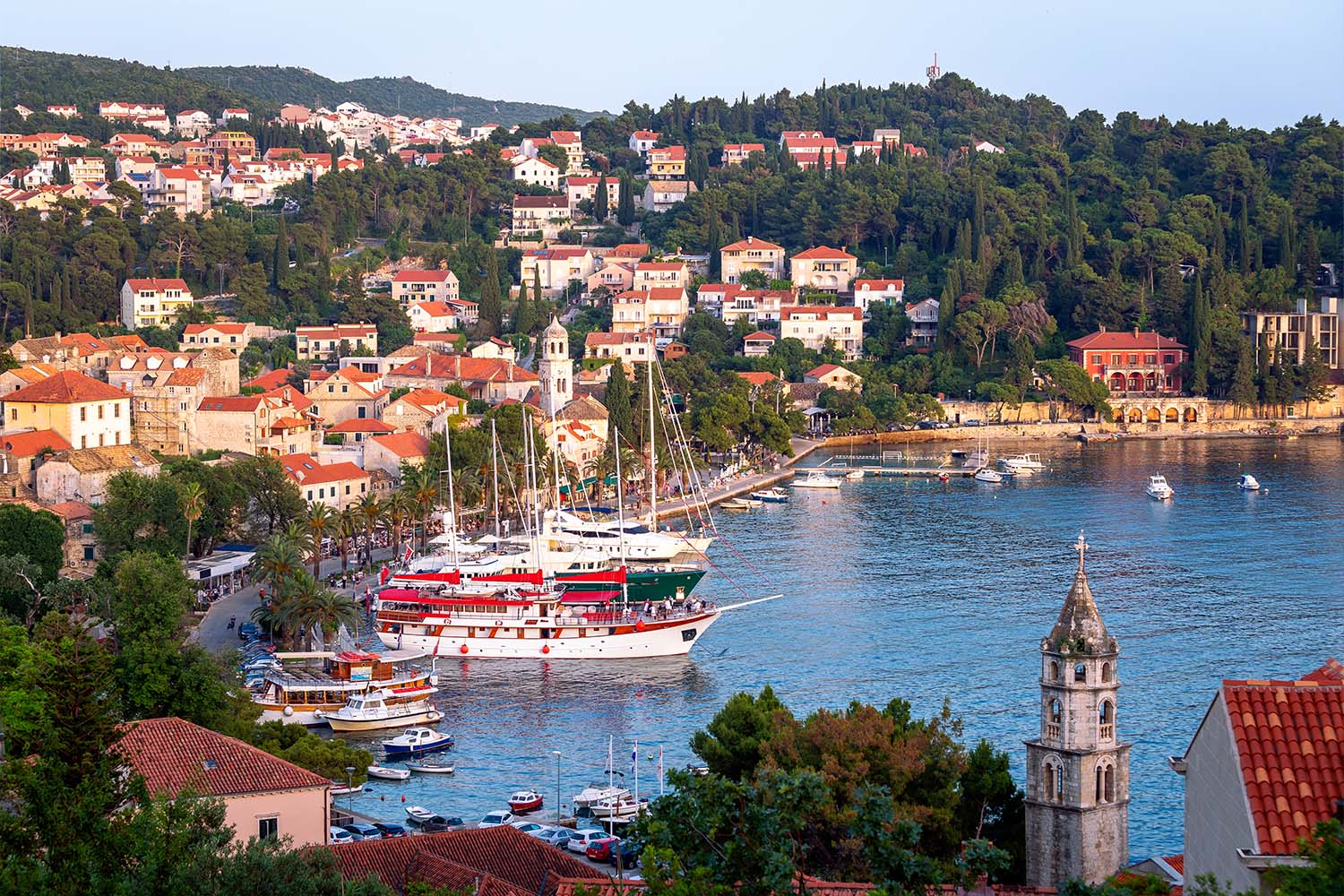

Tour: Self-guided walking tour of Cavtat
Cavtat, known in ancient times as Epidaurum, was established upon the slope of the Rat Peninsula and followed the standard Roman urban development plan. The well laid out streets make for easy touring today, though many historic tourist destinations, only accessible by foot, are high atop the hilly peninsula.
A fine start to the day is mere steps from Hotel Supetar’s front door, where the walking path rimming the peninsula is navigated in about a 30-minute loop. Enjoy views of yachts coming and going and Dubrovnik’s Old City in the distance. The walk is punctuated with many benches, and you’ll meet locals jogging, walking their dogs or simply out for their morning constitutional.
Once back into the center of town, several attractions are worthy of visiting. Start with the birthplace and home of Vlaho Bukovac, now a museum and gallery of one of the most well-known and beloved Croatian artists. The noted late 20th century portraitist was well traveled throughout the United States and Europe, though remained attached to Croatia and his home in Cavtat.
The nearby Shell Museum is more than a curiosity and represents the lifelong passion, travels and collection of a local Cavtat family of more than 3,500 different species from each of the world’s oceans. Look for the rare grouping of ultra-fragile Paper Nautilus shells — which are not shells at all, but rather the egg cases of a small octopus species that live and breed in the open ocean.
Tighten your shoes and hike up to the Saint Rocco Cemetery on the highest point of the Rat Peninsula and visit the Racic Family Mausoleum, designed and built by internationally renowned Croatian sculptor, Ivan Mestrovic. This masterwork won the Grand Prix at the International Exhibition of Decorative and Modern Arts in Paris in 1925.

Watch: Water polo at Cavtat Harbor
Croatians are crazy for water polo, and Cavtat holds an outsized reputation for turning out star national players. Catch a pick-up match or practice at the “pool” at the marina just off Obala Drive, Cavtat’s main street.

Eat: Ludo More
This knock out Cavtat institution is owned by a brother and sister duo who have their own fishing business and bring the freshest sea bounty to their guests at their casual eatery overlooking the harbor. Tiny fresh anchovies, charred and kissed with fresh olive oil, roasted eggplant pate and blistered Padron peppers with sheep’s milk cheese are the kind of simple Mediterranean tapas that define the culinary approach here.
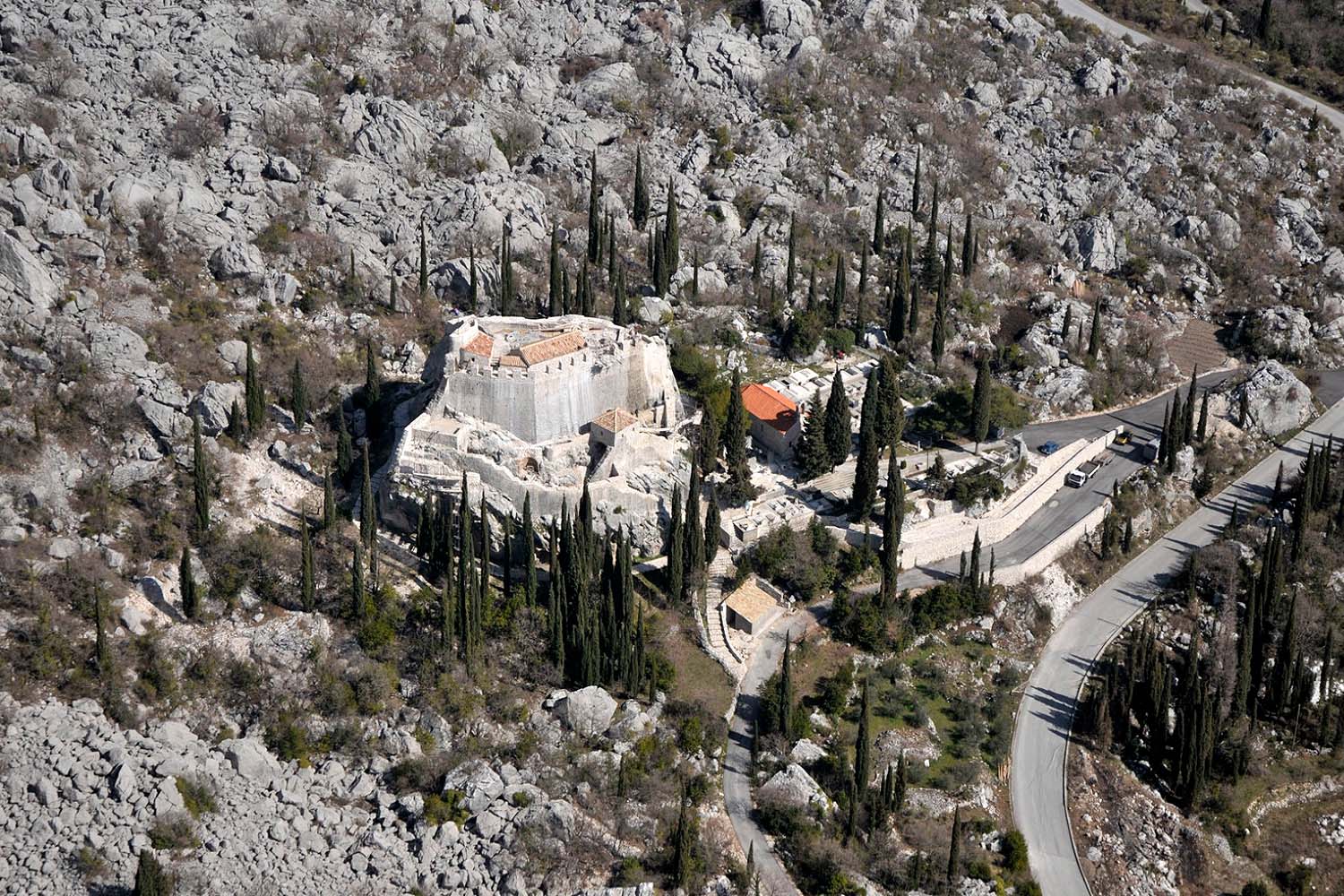
Day 7:

Tour: Konavle Valley
Blend regional history with a tour of local wine country by exploring the Konavale Valley with local guide Vedran Mezei. The Dubrovnik native is an author, historian and graduate of the Faculty of Tourism and Foreign Trade at Dubrovnik University. There’s no better resource to share your day with, as Mezei is as personable as he is knowledgeable.
His first stop is the Konavle County Museum, housed on the central square of Cilipi in a former village treasury building built in 1909. The museum and exhibitions here reflect local village life around the turn of the 20th century and feature extraordinary traditional men’s and women’s costumes and globally-recognized embroidery and textile handicrafts. Those lucky enough to be present on Sunday mornings are treated to costumed dancers performing for the guests.
Sokol Grad (The Castle of Sokol) is a 30 minute drive and towers above the small town of Gruda. The fortress overlooks a main artery leading from the Konavle north to Herzogovina. Upon reaching the summit climb, Mezei points and shares that Montenegro is merely five kilometers from where we stand. The exact dates of origin of the stone fortress are subject to debate, with written references as far back as 1373, yet archaeological studies date certain findings thousands of years earlier. Visitors find an incredibly maintained fort with well-documented exhibitions and archeological finds from weapons, spearheads, coins and armor to storage vessels, knives, forks and cooking utensils.
Pro tip: Bring water and a snack. Hiking the grounds is strenuous here with very steep steps. The site does have restroom facilities.

Drink: Winery Botaro
Konavle’s unique topography, soil composition and proximity to cool sea breezes are hospitable to wine production. Small family producers dominate here, and we stop at Winery Botaro near the small village of Drvnik on our way back into Cavtat.
Matea Botaro is the 22nd generation and first female winemaker at this 44-acre micro vineyard. With more than 600 years of family tradition behind her, Botaro represents a new face of stewardship and loves nothing more than to host guests at her family’s farm and vineyards, talk wine and share the bounty of their homestead. We’re met with a massive charcuterie board loaded with cured meats, cheeses, tomatoes, peppers, spreads, fresh baked bread, olive oil, wine and grappa, everything harvested and made on the farm.
Red zinfandel, zinfandel rosé, chardonnay and cabernet are the featured wines here, alongside liqueurs (sage, cherry, walnut) for late day sipping.

Eat: The Restaurant, Hotel Supetar
Dinner al fresco on the terrace at Hotel Supetar pairs seamless service, artfully presented fresh seafood and not-too-sweet desserts for a fitting close to your seven day Dubrovnik adventure.
This article was featured in the InsideHook newsletter. Sign up now.
